SNOSDD6 September 2021 LM74700-EP
PRODUCTION DATA
- 1 Features
- 2 Applications
- 3 Description
- 4 Revision History
- 5 Pin Configuration and Functions
- 6 Specifications
- 7 Parameter Measurement Information
- 8 Detailed Description
-
9 Application and Implementation
- 9.1 Application Information
- 9.2 Typical Application
- 9.3 OR-ing Application Configuration
- 10Power Supply Recommendations
- 11Layout
- 12Device and Documentation Support
- 13Mechanical, Packaging, and Orderable Information
Package Options
Mechanical Data (Package|Pins)
- DDF|8
Thermal pad, mechanical data (Package|Pins)
Orderable Information
9.2.5 Application Curves
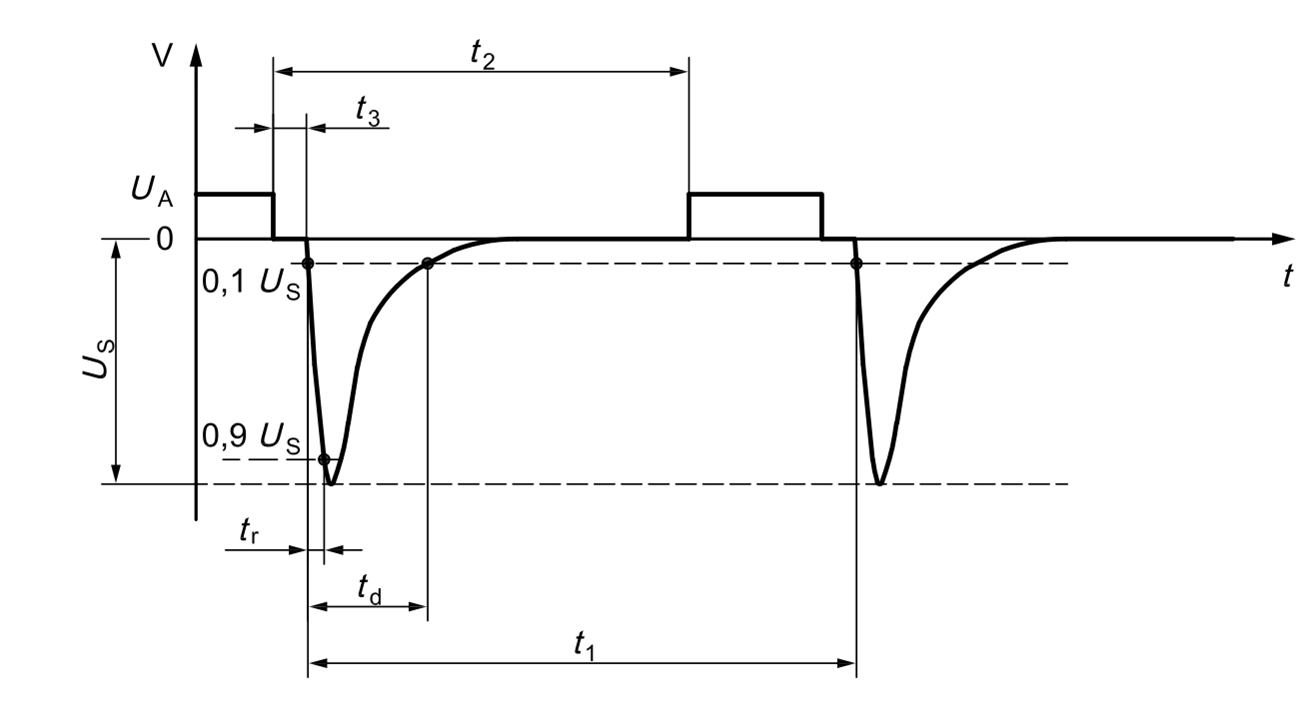 Figure 9-4 ISO
7637-2 Pulse 1
Figure 9-4 ISO
7637-2 Pulse 1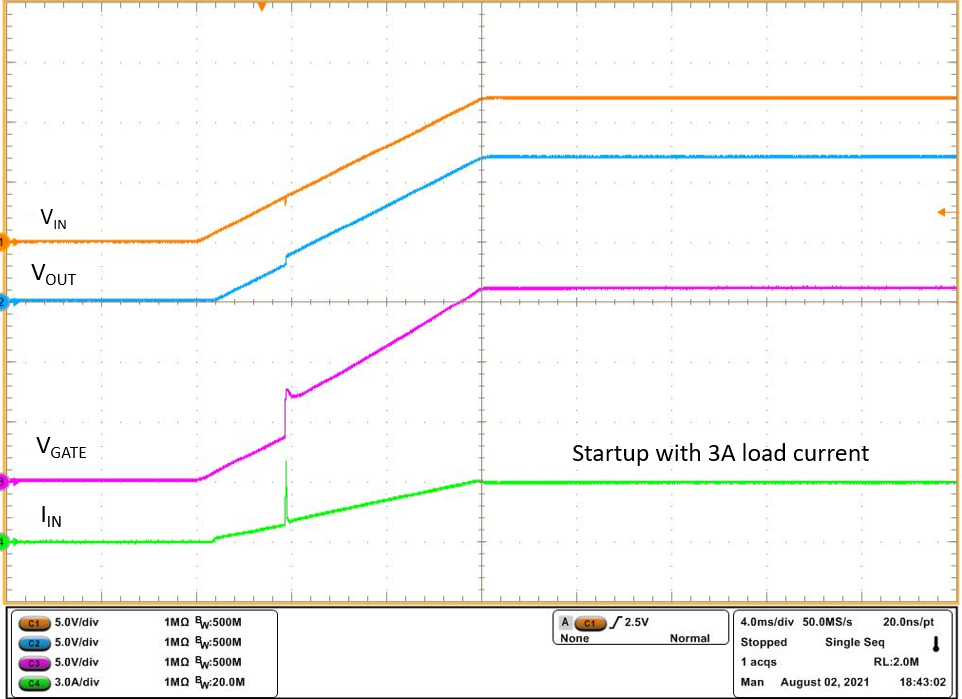
| Time (4 ms/DIV) |
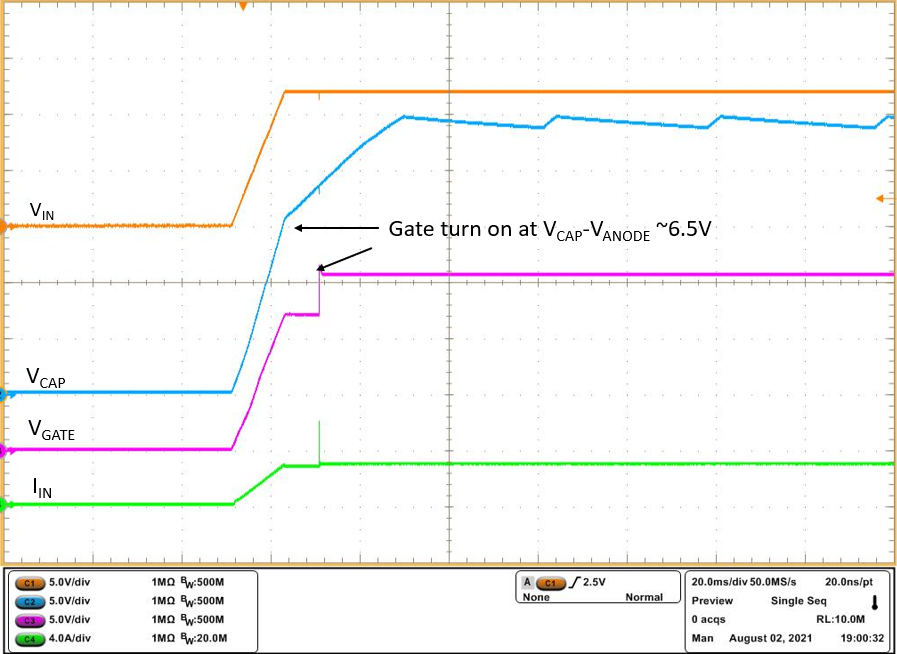
| Time (20 ms/DIV) |
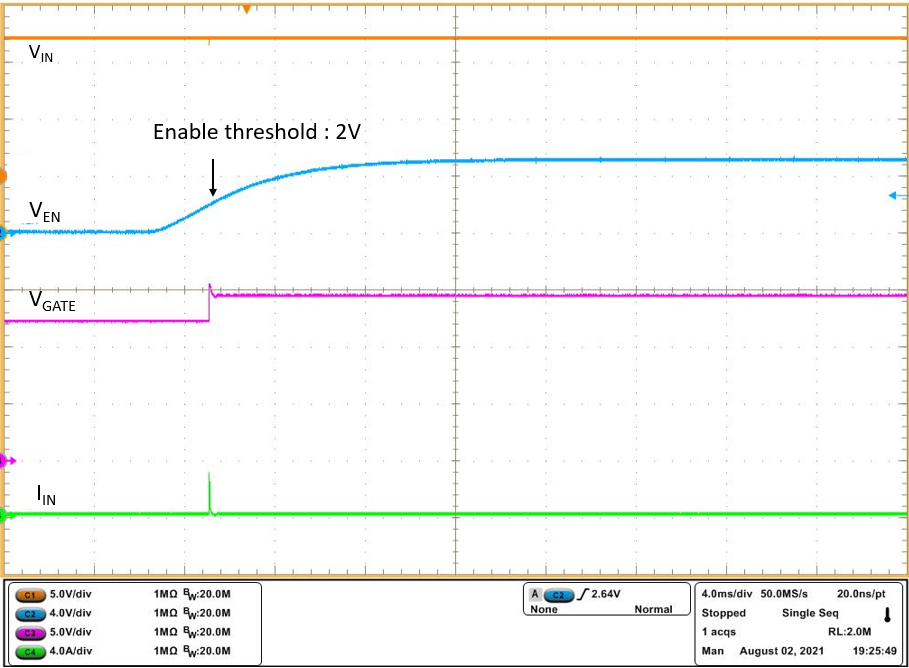
| Time (4 ms/DIV) |
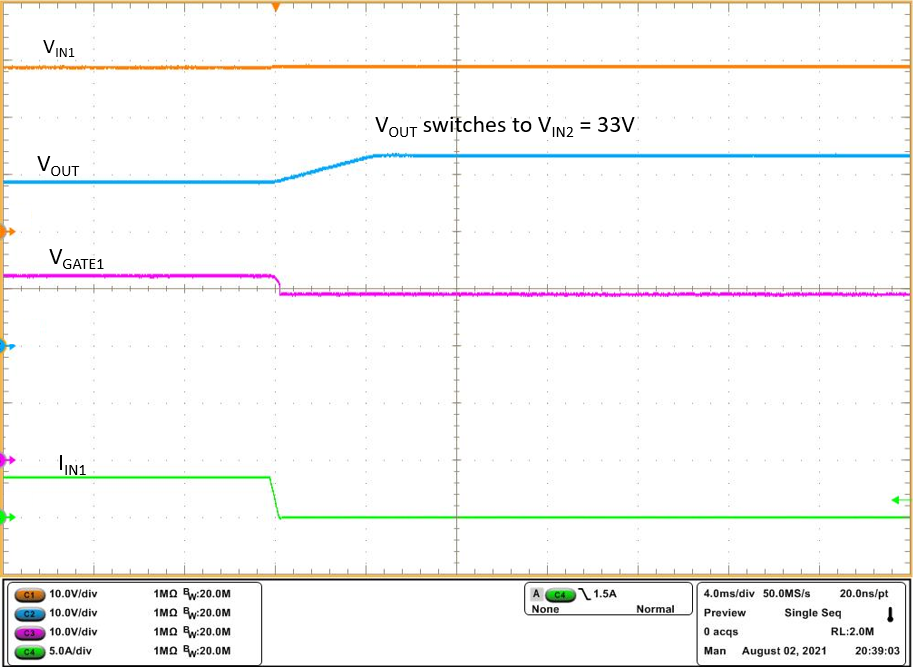
| Time (4 ms/DIV) |
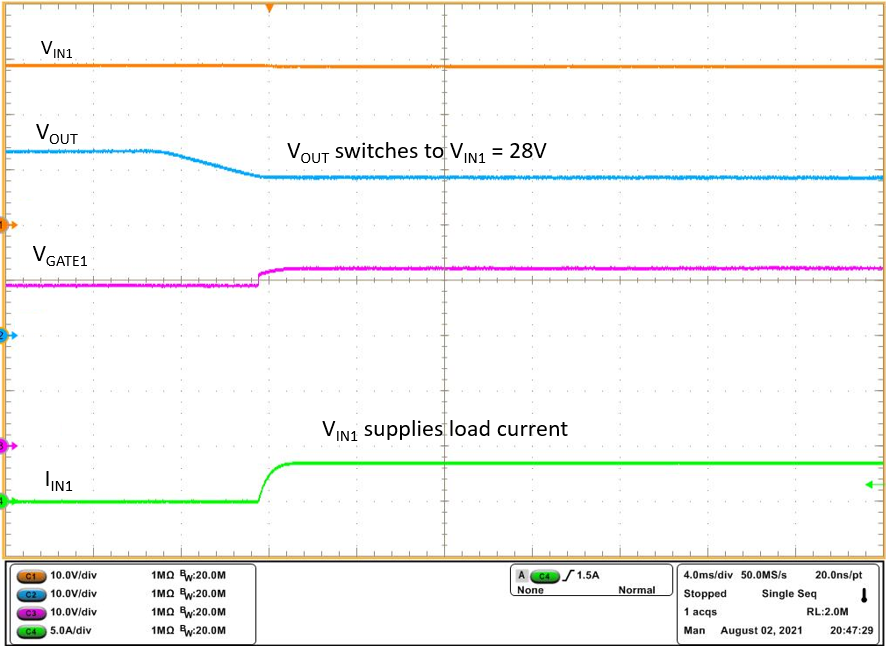
| Time (4 ms/DIV) |
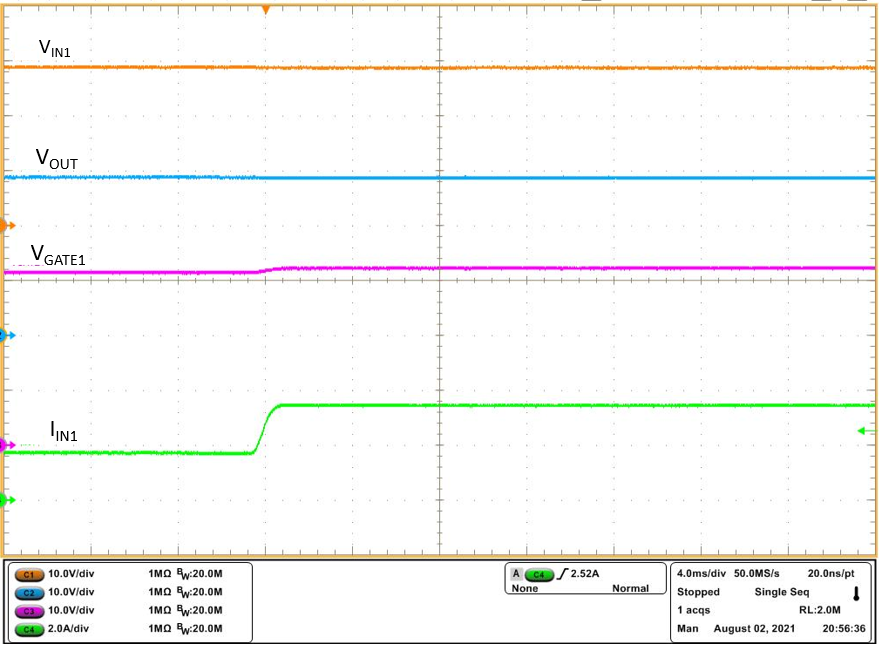
| Time (4 ms/DIV) |
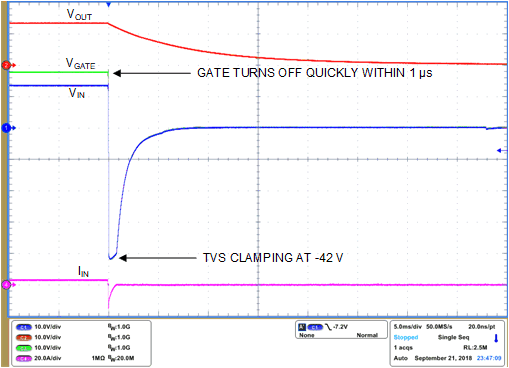
| Time (5 ms/DIV) |
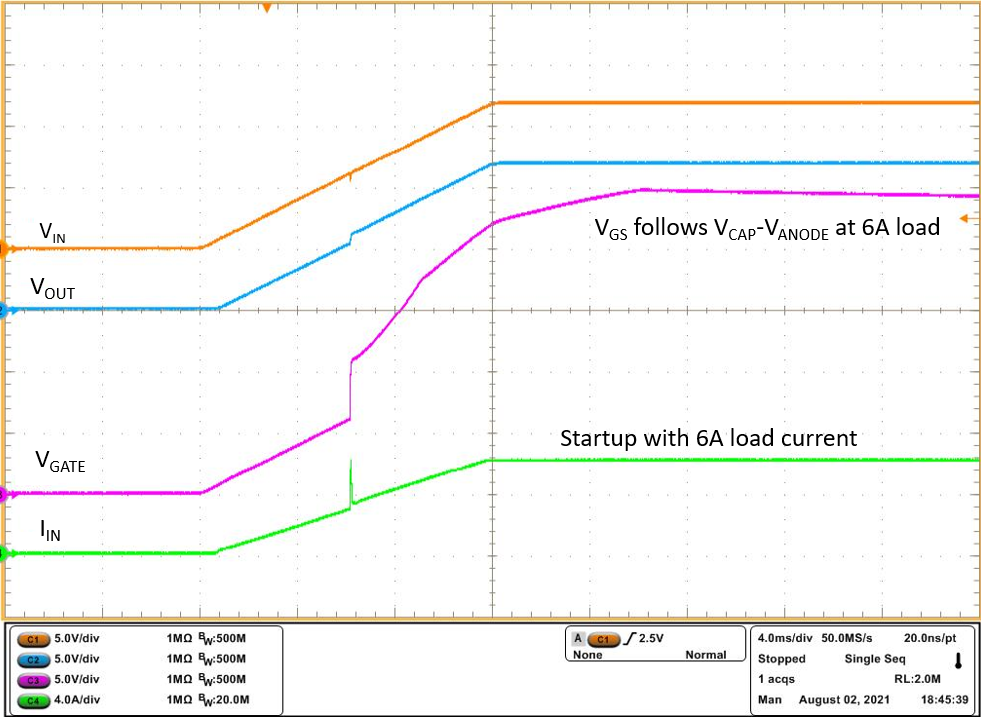
| Time (4 ms/DIV) |
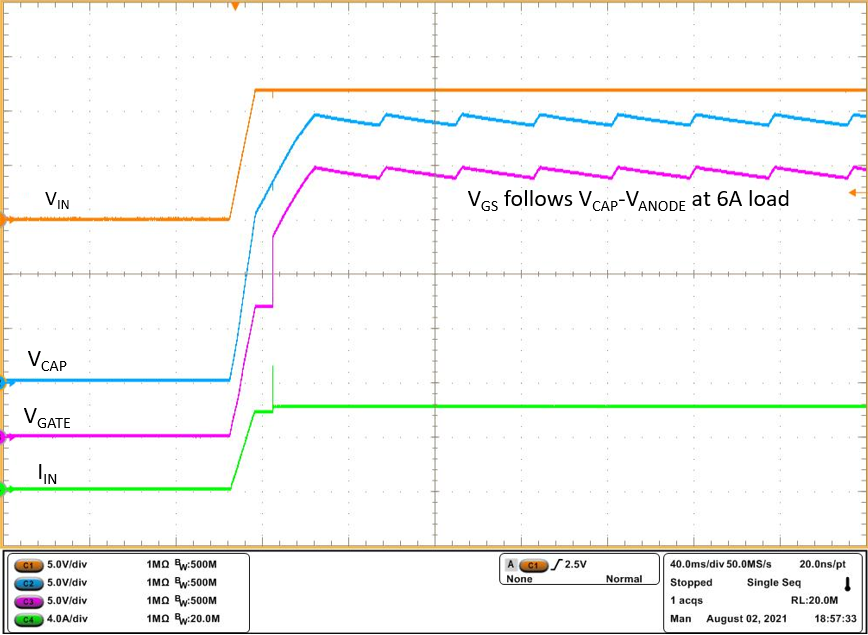
| Time (40 ms/DIV) |
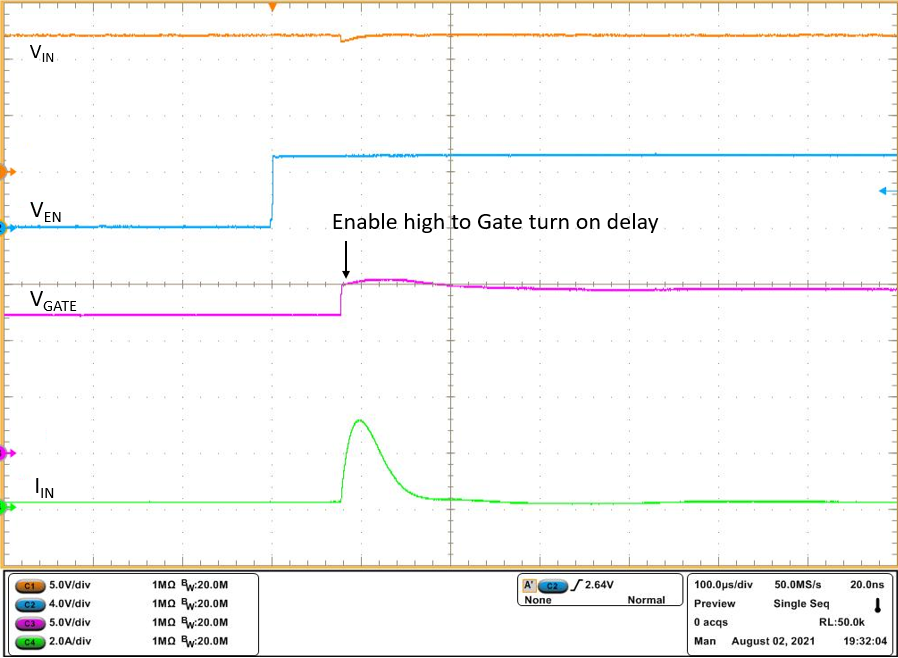
| Time (100 µs/DIV) |
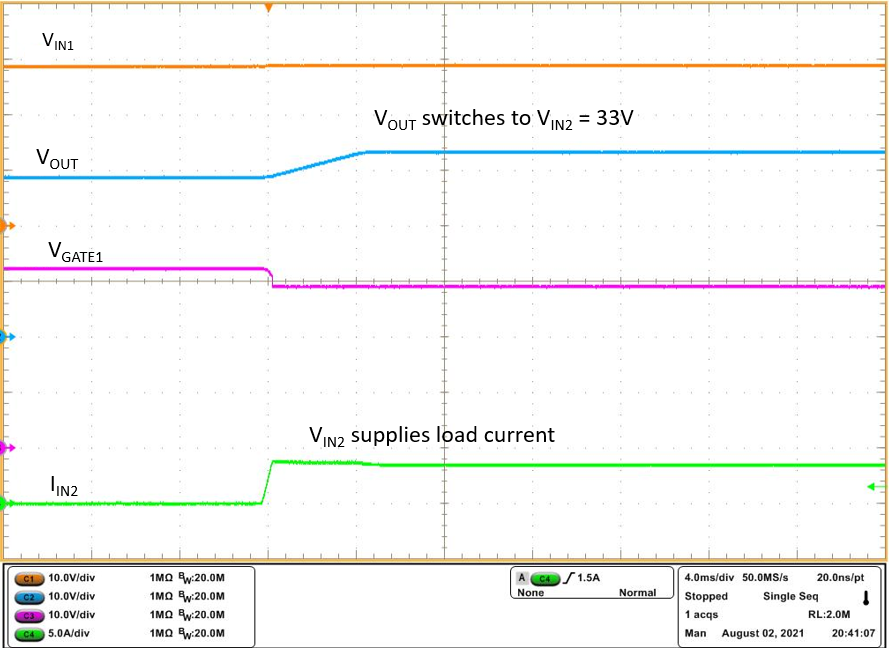
| Time (4 ms/DIV) |
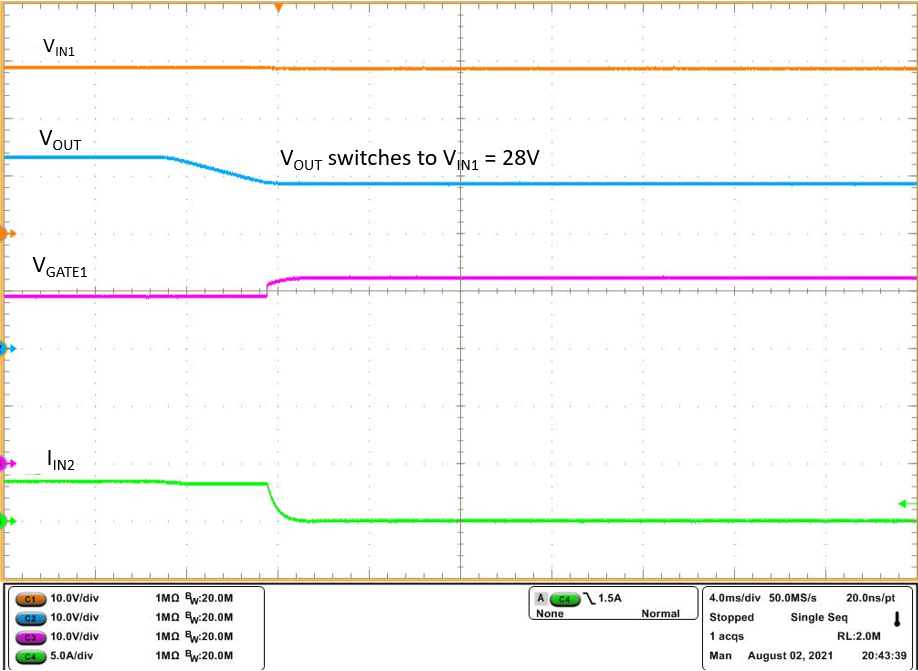
| Time (4 ms/DIV) |
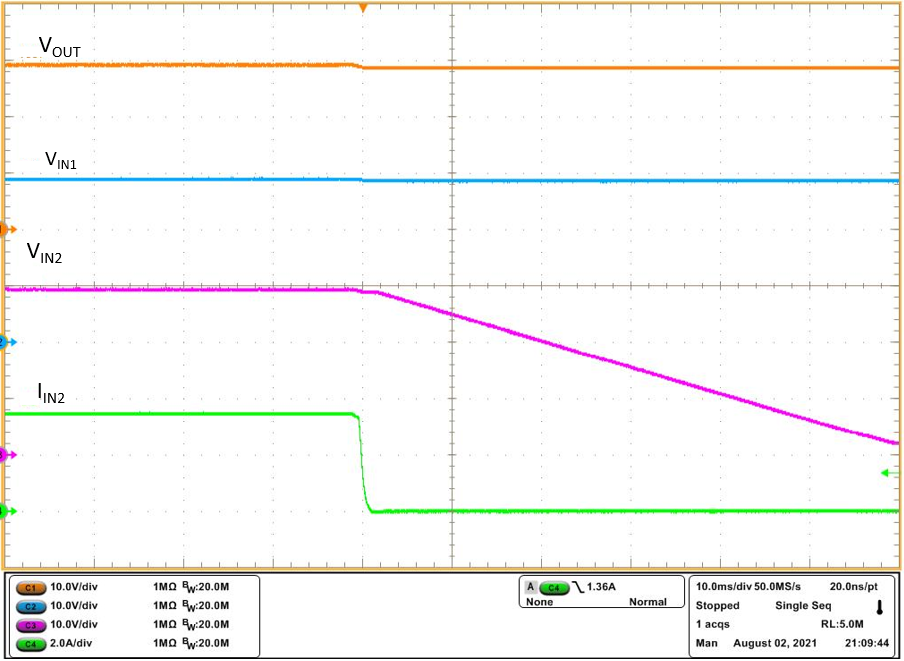
| Time (10 ms/DIV) |